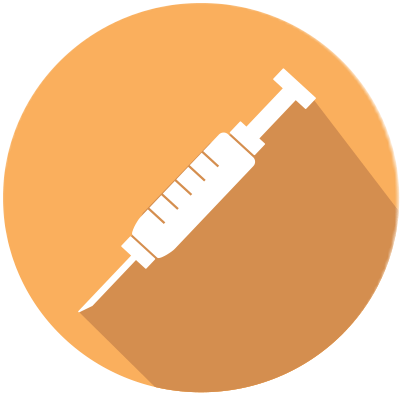
Cambridge Healthtech Institute’s 8th Annual
Bispecific Antibody Therapeutics
Engineering Multi-Specificity
January 17-18, 2019
CHI’s Bispecific Antibody Therapeutics conference explores the challenges of engineering multi-specificity to achieve more effective therapies that bind to at least two molecular targets simultaneously. These next-generation antibody formats are
showing efficacy in the efforts to conquer cancer and other diseases by employing breakthrough technologies and engineering brilliance. Case studies will highlight novel engineering approaches that address safety, stability, enhanced targeting, and
manufacturability, as the conference examines current developments, and future directions for these promising molecules.
Final Agenda
THURSDAY, JANUARY 17
7:45 am Registration and Morning Coffee (Sapphire West Foyer)
8:10 Organizer’s Welcome Remarks
Mary Ruberry, Senior Conference Director, Cambridge Healthtech Institute
8:15 Chairperson’s Opening Remarks
James Ernst, PhD, Senior Scientist, Protein Chemistry, Genentech, Inc.
KEYNOTE PRESENTATION
 8:20 T Cell Therapeutics in Hematological Malignancies and Solid Tumors
8:20 T Cell Therapeutics in Hematological Malignancies and Solid Tumors
Tara Arvedson, PhD, Director, Oncology Research, Amgen, Inc.
T cell therapeutics have demonstrated a clinical benefit in hematological malignancies and there is early evidence of activity in solid tumors. Analysis of data derived from T cell therapeutics in hematological malignancies will increase the chances of
success for similar therapeutics in solid tumors. This presentation will describe key findings from recent trials of T cell therapeutics in hematological malignancies and will relate these findings to approaches for treating solid tumors.
9:00 Expanding Bispecific Antibody Technology to Enable Multiple Avenues of T Cell Activation
 Matthew Bernett, PhD, Associate Director, Protein Engineering, Xencor, Inc.
Matthew Bernett, PhD, Associate Director, Protein Engineering, Xencor, Inc.
Xencor has applied its XmAb® bispecific technology platform to create multiple novel modalities for T cell derepression and activation. These include dual checkpoint inhibitors
such as PD1 x CTLA4 and CTLA4 x LAG3 bispecific antibodies, as well as a PD1 x ICOS bispecific antibody that combines checkpoint blockade and costimulation into a single molecule. Finally, we have utilized our heterodimeric Fc domain to create a novel
long-acting IL15/IL15Rɑ-Fc for immunotherapy.
9:30 An Integrated Approach to Managing Immunogenicity Risk and Optimum Protein Design
 Jeremy Fry, Director, Sales, ProImmune, Ltd.
Jeremy Fry, Director, Sales, ProImmune, Ltd.
Integrated platforms can be used to mitigate immunogenicity risk and characterize immune responses during the drug design and development stages. ProImmune offers mutational activity mapping for optimal protein design, DC-T/T cell proliferation assays
for biologic lead selection/optimization, a Mass Spectrometry assay for characterization of antigen presentation, HLA-peptide binding assays to characterize individual epitopes and undiluted whole blood cytokine storm assays.
10:00 Coffee Break in the Exhibit Hall with Poster Viewing (Sapphire Ballroom)
11:00 A Novel Multi-Specific Antibody Targeting PD-L1-Overexpressing Cancers that Stimulates Antigen-Committed CD8+ T Cells through Concomitant Engagement the Costimulatory Receptor 4-1BB
 Alexandre Simonin, PhD, Director, mAb Discovery, Numab Innovation AG
Alexandre Simonin, PhD, Director, mAb Discovery, Numab Innovation AG
Targeting PD-L1 and 4-1BB with a multi-specific antibody format holds the promise of increased potency while improving safety. Numab develops a molecule that potently blocks PD-L1/PD-1 signaling and elicits further T cell activation through its costimulatory
domain solely in the close proximity of cells that overexpress PD-L1. Preclinical data show efficacy on tumor growth in combination with an enhanced intratumoral CD8+ T cell activation when compared to the combination of the PD-L1 and 4-1BB modalities.
11:30 Leveraging Anti-Tumor Immunity through Bispecific DART Molecules
 Paul Moore, PhD, Vice President, Immunology & Cell Biology, MacroGenics,
Inc.
Paul Moore, PhD, Vice President, Immunology & Cell Biology, MacroGenics,
Inc.
Boosting host immune responses through antibody-based blockade of checkpoint pathways has provided unprecedented response rates in select cancer types. Bispecific antibody targeting provides opportunity to optimize and expand benefit. Examples of
such strategies utilizing the DART®/TRIDENT™ platforms will be presented, including simultaneous targeting of multiple checkpoints, redirected T-cell killing
of tumor cells and tumor-anchored immune co-stimulation. Topics covered will span structural design, preclinical development and clinical proof-of-concept.
12:00 pm Session Break
 12:10
NEW: Luncheon Presentation I: Humanized Mouse Model-Based Pharmacology Study Platform at Biocytogen, Promoting Therapeutic Antibody Discovery
12:10
NEW: Luncheon Presentation I: Humanized Mouse Model-Based Pharmacology Study Platform at Biocytogen, Promoting Therapeutic Antibody Discovery
 Qingcong Lin, PhD, CEO, Biocytogen Boston Corp
Qingcong Lin, PhD, CEO, Biocytogen Boston Corp
The talk will present you Biocytogen services for your antibody discovery with case study, from in vivo efficacy and toxicity, to in vitro PD/PD analysis of your therapeutic antibody candidates, using Biocytogen IO target humanized mouse models, B-NDG
based CART, and PBMC/CD34+ human immune reconstituted mouse models, CD3e humanized models for bispecific antibody discovery
12:40 Luncheon Presentation II (Sponsorship Opportunity Available)
1:10 Ice Cream Break in the Exhibit Hall with Poster Viewing (Sapphire Ballroom)
2:15 Chairperson’s Remarks
G. Jonah Rainey, PhD, CEO, Oriole Biotech, Inc.
2:20 Redefinition of RTK Tumor Targeting: How to Design Truly Potent Anti-HER2/3 Bispecific and Biparatopic Agents
 Rastislav Tamaskovic, PhD, Head, TC
Facility, Biochemistry, University of Zurich
Rastislav Tamaskovic, PhD, Head, TC
Facility, Biochemistry, University of Zurich
Due to adaptiveness of oncogenic networks, tumors readily develop resistance against targeted therapies. Recently, we developed a new class of bispecific and biparatopic anti-HER2/3 targeting agents to overcome the adaptive resistance. These targeting
vehicles achieve their superior tumoricidal activity by trapping tumor-driving receptor tyrosine kinases in inactive conformations and/or supramolecular assemblies. Analogously, we built a new platform for tumor RTK fingerprinting to identify
prospective therapeutic leads and combination therapies.
2:50 ZW25/ZW49, Development of a HER2-Targeted Biparatopic Antibody and Biparatopic Antibody-Drug Conjugate
 David Poon, PhD, Executive Director, External R&D and Alliances,
Zymeworks, Inc.
David Poon, PhD, Executive Director, External R&D and Alliances,
Zymeworks, Inc.
ZW25 is a bispecific antibody directed against two distinct epitopes (biparatopic) on HER2 that has been successfully engineered using the Azymetric™ IgG1 antibody scaffold. ZW25 is well tolerated and has demonstrated promising single-agent
anti-tumor activity in heavily pretreated HER2-expressing breast, gastric, and other cancers. Preclinical development of ZW49, a biparatopic antibody-drug conjugate based on the unique design of ZW25 and armed with our proprietary ZymeLink™
cytotoxic payload, will also be discussed.
 3:20 Avidity Kills Cancer – the Biophysical Analysis of Bispecific Antibodies with the switchSENSE® Biosensor
3:20 Avidity Kills Cancer – the Biophysical Analysis of Bispecific Antibodies with the switchSENSE® Biosensor
 Thomas Weber, PhD, Applications Team Leader, Dynamic Biosensors GmbH
Thomas Weber, PhD, Applications Team Leader, Dynamic Biosensors GmbH
Measurements of kinetic rates and avidity binding in dual antigen engagements of bispecific antibodies provide insights for adjusting arm affinities to optimize for target specificity. I will describe the utilization of the novel switchSENSE® biosensor to emulate the display of two different target antigens on a cancer cell. The use of DNA-guided surface functionalization and dual-color fluorescence detection enables the simultaneous and precise control over relative abundance and spatial arrangement of two surface antigen species.
3:35 Networking Refreshment Break (Sapphire & Aqua West Foyer)
4:00 SMITE Bispecifics: A Novel Combination Strategy to Combat Cancer
 Ashok D. Bandaranayake, PhD, Director,
Bioprocess Development and Automation, Protein Therapeutics Program, Fred Hutchinson Cancer Research Center
Ashok D. Bandaranayake, PhD, Director,
Bioprocess Development and Automation, Protein Therapeutics Program, Fred Hutchinson Cancer Research Center
We propose a new way of gaining a high level of specificity for cancer by employing two bispecific molecules simultaneously. Importantly, each of these molecules is designed to have little or no activity on their own, so that healthy tissue bearing
either one of the targets is not affected. However, when both targets are expressed (in cancer) the two bispecific molecules act in synergy, stimulating and co-stimulating T cells for maximum efficacy.
4:30 ATOR-1015, a Bispecific CTLA-4 x OX40 Antibody, Induces Anti-Tumor Effects through Tumor-Directed Immune Activation
 Peter Ellmark, PhD, Vice President, Discovery, Alligator
Bioscience AB
Peter Ellmark, PhD, Vice President, Discovery, Alligator
Bioscience AB
ATOR-1015, a next-generation CTLA-4 antibody designed to deplete Tregs and activate effector T cells. ATOR-1015 is tumor-directed, which is expected to result in a favorable benefit/risk profile. A clinical Phase I trial is planned to start in
H2 of 2018.
5:00 Agonist Bispecific Antibodies Delivering the Next Immuno-Oncology Breakthrough
 Matthew Lakins, PhD, Senior Scientist, F-star Biotechnology, Ltd.
Matthew Lakins, PhD, Senior Scientist, F-star Biotechnology, Ltd.
Targeting T cells via TNFRSF costimulatory pathways has the potential to strongly activate the immune system due to broad expression across multiple immune cells. However, FcγR-mediated crosslinking is often required for optimal activity,
limiting clinical efficiency, due to low affinity of Fc:FcγR interactions and ADCC-mediated T cell depletion. We will present novel bispecific programmes that do not rely on FcγR binding, but instead crosslink their two targets,
resulting in a potent and controlled T cell activation.
5:30 Close of Day
FRIDAY, JANUARY 18
8:00 am Registration (Sapphire West Foyer)
8:00 BuzZ Sessions with Continental Breakfast (Sapphire Foyer)
Protein therapeutics is a fast-growing global market. As the science improves, so does the complexity of the R&D organization. Ensuring product quality plus speed to market requires insights from stakeholders working across the stages of protein
science R&D. Join experts representing this PepTalk pipeline, peers, and colleagues for an interactive roundtable discussion. Topics include highlights from the week’s presentations, new technologies and strategies, challenges, and
future trends.
Click here for more details
Moderator: Moderator: Rakesh Dixit, PhD, DABT, Vice President, Medimmune-AstraZeneca
9:00 Chairperson’s Remarks
Peter Ellmark, PhD, Vice President, Discovery, Alligator Bioscience AB
9:05 Fully Human, Heavy-Chain Antibodies Facilitate Rapid Development of Multi-Specific Antibodies
 Wim van Schooten, PhD, CSO, TeneoBio, Inc.
Wim van Schooten, PhD, CSO, TeneoBio, Inc.
TeneoBio’s discovery platform utilizes VH domains of fully human heavy chain antibodies (UniAbs) to develop bi-, tri-, and tetravalent antibodies. Binding domains of UniAbs are stable structures that can be easily put together into multi-specific
antibodies. Clinical trials of TeneoBio’s first trivalent antibody will be initiated in 2018.
9:35 Format and Isotype Selection for Optimal Bispecific Activity
 G. Jonah Rainey, PhD, CEO, Oriole Biotech, Inc.
G. Jonah Rainey, PhD, CEO, Oriole Biotech, Inc.
Bispecific antibodies are versatile molecules that allow diverse and potent mechanisms of action. As we move from the first-approved bispecifics that retarget killing of T cells to tumor cells, strategies that take into account the ability
to interact with non-adaptive immune and non-immune components need to be exploited to achieve optimal efficacy and safety. Design considerations including valency, effector function, and half-life will be discussed.
10:05 A Toolbox for the Generation, Purification, and Customized Functional Adaptation of Bispecific ADCs
 Harald Kolmar, PhD, Professor, Applied Biochemistry,
Technical University Darmstadt
Harald Kolmar, PhD, Professor, Applied Biochemistry,
Technical University Darmstadt
A platform was developed for the facile generation of common light chain antibodies using yeast display. pH-dependent binding can be introduced by common light chain engineering. Bispecific ADCs are generated using SEED technology followed
by enzyme-mediated coupling of a polymer-drug conjugate with high payload (DextraMab). We also established a route for the purification of bispecifics via affinity chromatography using tailor-made anti-idiotype binders.
10:35 Networking Coffee Break (Sapphire & Aqua West Foyer)
11:00 Bispecific Formatomics – Addressing Biology and Developability
 Thomas Huber, PhD, Senior Investigator II and
Technology Leader, Multispecific Modalities, Novartis Institutes for BioMedical Research, Inc. (NIBR)
Thomas Huber, PhD, Senior Investigator II and
Technology Leader, Multispecific Modalities, Novartis Institutes for BioMedical Research, Inc. (NIBR)
A variety of bispecific antibody approaches and formats are being developed at Novartis. Based on case studies, a view on bispecifics beyond oncology will be shared. Maximal tolerability, minimal immunogenicity risk and suitability for high concentration
formulation are key parameters driving the molecular design.
11:30 A Bispecific Antibody Mimetic of FGF21 for the Metabolic Disease and NASH
 James Ernst, PhD, Senior Scientist, Protein Chemistry, Genentech,
Inc.
James Ernst, PhD, Senior Scientist, Protein Chemistry, Genentech,
Inc.
Activation of the FGF21 pathway has been shown to improve multiple features of metabolic disease in animals. Here we describe a novel bispecific antibody that mimics the function and metabolic effects of FGF21. Treatment with this antibody improves
glycemic and lipid profiles in mouse disease models and reduces body weight in mice and non-human primates. These effects mimic the activity of FGF21 on both mice and non-human primates, suggesting that antibody-mediated activation of FGF21
pathway would be an effective treatment for type 2 diabetes.
12:00 pm Conference Wrap-Up
 Rakesh Dixit, PhD, DABT, Vice President, Medimmune-AstraZeneca
Rakesh Dixit, PhD, DABT, Vice President, Medimmune-AstraZeneca
12:30 Close of Conference